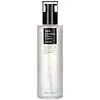What's inside
What's inside
 Key Ingredients
Key Ingredients

 Benefits
Benefits

 Concerns
Concerns

 Ingredients Side-by-side
Ingredients Side-by-side

Water
Skin ConditioningCitrus Limon Fruit Extract
MaskingGlycolic Acid
BufferingMethylpropanediol
SolventAlcohol Denat.
AntimicrobialSodium Hydroxide
BufferingDipropylene Glycol
HumectantSphingomonas Ferment Extract
Skin ConditioningCitrus Limon Peel Oil
MaskingSodium Hyaluronate
HumectantOzothamnus Diosmifolius Extract
Citrus Aurantium Dulcis Peel Oil
MaskingCitrus Aurantifolia Oil
CleansingRose Flower Oil
MaskingFortunella Margarita Peel Oil
Lavandula Angustifolia Oil
MaskingRosmarinus Officinalis Leaf Oil
MaskingAlthaea Rosea Flower Extract
Skin ConditioningCitrus Aurantium Bergamia Fruit Oil
Masking1,2-Hexanediol
Skin ConditioningOctyldodeceth-16
EmulsifyingPhosphorus Pentoxide
BufferingPanthenol
Skin ConditioningButylene Glycol
HumectantSalicylic Acid
MaskingAllantoin
Skin ConditioningPentylene Glycol
Skin ConditioningBeta-Glucan
Skin ConditioningCaprylyl Glycol
EmollientEthylhexylglycerin
Skin ConditioningPhenoxyethanol
PreservativeLimonene
PerfumingCitral
PerfumingWater, Citrus Limon Fruit Extract, Glycolic Acid, Methylpropanediol, Alcohol Denat., Sodium Hydroxide, Dipropylene Glycol, Sphingomonas Ferment Extract, Citrus Limon Peel Oil, Sodium Hyaluronate, Ozothamnus Diosmifolius Extract, Citrus Aurantium Dulcis Peel Oil, Citrus Aurantifolia Oil, Rose Flower Oil, Fortunella Margarita Peel Oil, Lavandula Angustifolia Oil, Rosmarinus Officinalis Leaf Oil, Althaea Rosea Flower Extract, Citrus Aurantium Bergamia Fruit Oil, 1,2-Hexanediol, Octyldodeceth-16, Phosphorus Pentoxide, Panthenol, Butylene Glycol, Salicylic Acid, Allantoin, Pentylene Glycol, Beta-Glucan, Caprylyl Glycol, Ethylhexylglycerin, Phenoxyethanol, Limonene, Citral
 Reviews
Reviews

Ingredients Explained
These ingredients are found in both products.
Ingredients higher up in an ingredient list are typically present in a larger amount.
1,2-Hexanediol is a synthetic liquid and another multi-functional powerhouse.
It is a:
- Humectant, drawing moisture into the skin
- Emollient, helping to soften skin
- Solvent, dispersing and stabilizing formulas
- Preservative booster, enhancing the antimicrobial activity of other preservatives
Butylene Glycol (or BG) is used within cosmetic products for a few different reasons:
Overall, Butylene Glycol is a safe and well-rounded ingredient that works well with other ingredients.
Though this ingredient works well with most skin types, some people with sensitive skin may experience a reaction such as allergic rashes, closed comedones, or itchiness.
Learn more about Butylene GlycolPanthenol is a common ingredient that helps hydrate and soothe the skin. It is found naturally in our skin and hair.
There are two forms of panthenol: D and L.
D-panthenol is also known as dexpanthenol. Most cosmetics use dexpanthenol or a mixture of D and L-panthenol.
Panthenol is famous due to its ability to go deeper into the skin's layers. Using this ingredient has numerous pros (and no cons):
Like hyaluronic acid, panthenol is a humectant. Humectants are able to bind and hold large amounts of water to keep skin hydrated.
This ingredient works well for wound healing. It works by increasing tissue in the wound and helps close open wounds.
Once oxidized, panthenol converts to pantothenic acid. Panthothenic acid is found in all living cells.
This ingredient is also referred to as pro-vitamin B5.
Learn more about PanthenolSodium Hyaluronate is hyaluronic acid's salt form. It is commonly derived from the sodium salt of hyaluronic acid.
Like hyaluronic acid, it is great at holding water and acts as a humectant. This makes it a great skin hydrating ingredient.
Sodium Hyaluronate is naturally occurring in our bodies and is mostly found in eye fluid and joints.
These are some other common types of Hyaluronic Acid:
Learn more about Sodium Hyaluronate